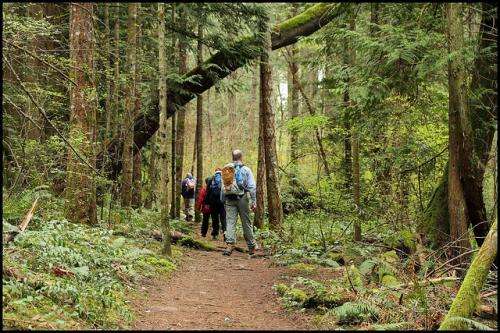Human traffic threatens urban forests

A study investigating the affect of recreational trails in endangered urban forests has found that their expansiveness and unmethodical planning is increasing fragmentation and impacting biodiversity.
Curtin University and Griffith University experts and co-authors Mark Ballantyne, Dr Ori Gudes and Professor Catherine Pickering studied the fragmentation of seventeen endangered urban forests and their relation to fourteen different trail types discovered within 46.1km of forest floor.
They found more than 5.7 per cent of the forest area had been lost to trails and their edge affects, resulting in changes to soil microbiology, compaction, erosion, the introduction of weeds and pathogens and wildlife disturbance.
"[All trail types] have an environmental impact," Mr Ballantyne says.
"Each one has its own communities of animals and plants that rely on that area to live in.
"However overall I feel the largest loss would be stress as they have a very limited trunk area and a large canopy, so for every tiny bit of trunk removed a large canopy [is also removed] so they're not proportional.
"What we tried to show was that no matter how much you try to limit the spread of trails for every unit area you take out for trail construction you are actually removing an important part of the biodiversity and it needs to be managed more appropriately."
Planning ahead can minimise impact
Recreational trails can be split into four categories'; those used by motorists or bikes, hard surfaced gravel trails, hard surfaced concrete paths and informal trails.
The lack of planning combined with informal trails generated from tourists and park-goers leads to networks of damaging trails that need to be structured and maintained for effectiveness.
"Limitations are already in place to an extent," Mr Ballantyne says.
"Park fees often deter huge volumes of mass tourists from using the park, but I think it's more about limiting their special spread of an area.
"If we centralise visitor flows in these areas and use a formalised network of trails that avoid sensitive areas then we could limit the amount of forest damage.
"[The best alternative is] to reduce the amount of informal trails spatially and try to create a network of trails that focusses on areas that people want to see and use for their recreation; that is hardened but also has an active rehabilitation rescheme alongside it."
More information: Mark Ballantyne, Ori Gudes, Catherine Marina Pickering, "Recreational trails are an important cause of fragmentation in endangered urban forests: A case-study from Australia," Landscape and Urban Planning, Volume 130, October 2014, Pages 112-124, ISSN 0169-2046, dx.doi.org/10.1016/j.landurbplan.2014.07.004.
Provided by Science Network WA
















